
by Gideon Marcus
Star Trek is usually defined as an "action-adventure show" or maybe just a "science fiction program". While it is the first truly SFnal production on television (The Twilight Zone and The Outer Limits had their moments, but for the most part, their science fiction was primitive), for its first two seasons, it tended to hew close to its '40s era Astounding Science Fiction roots.
With last week's episode, that all changed. The 1960s, and the experimental New Wave movement, has arrived on television.

Diana Muldaur returns to Trek as Dr. Miranda Jones, a human telepath who has never seen Earth, but who spent four years on Vulcan learning to master and tame her profound powers. She has been tapped to serve as ambassador to the Medusans, a race of inchoate aliens of sublime thoughts and profound navigational abilities, but whose appearance is so hideous as to render all humans who see them insane. Jones is accompanied by the Medusan ambassador to the Federation, Kollos, who spends most of his time in a box for the safety of the crew.
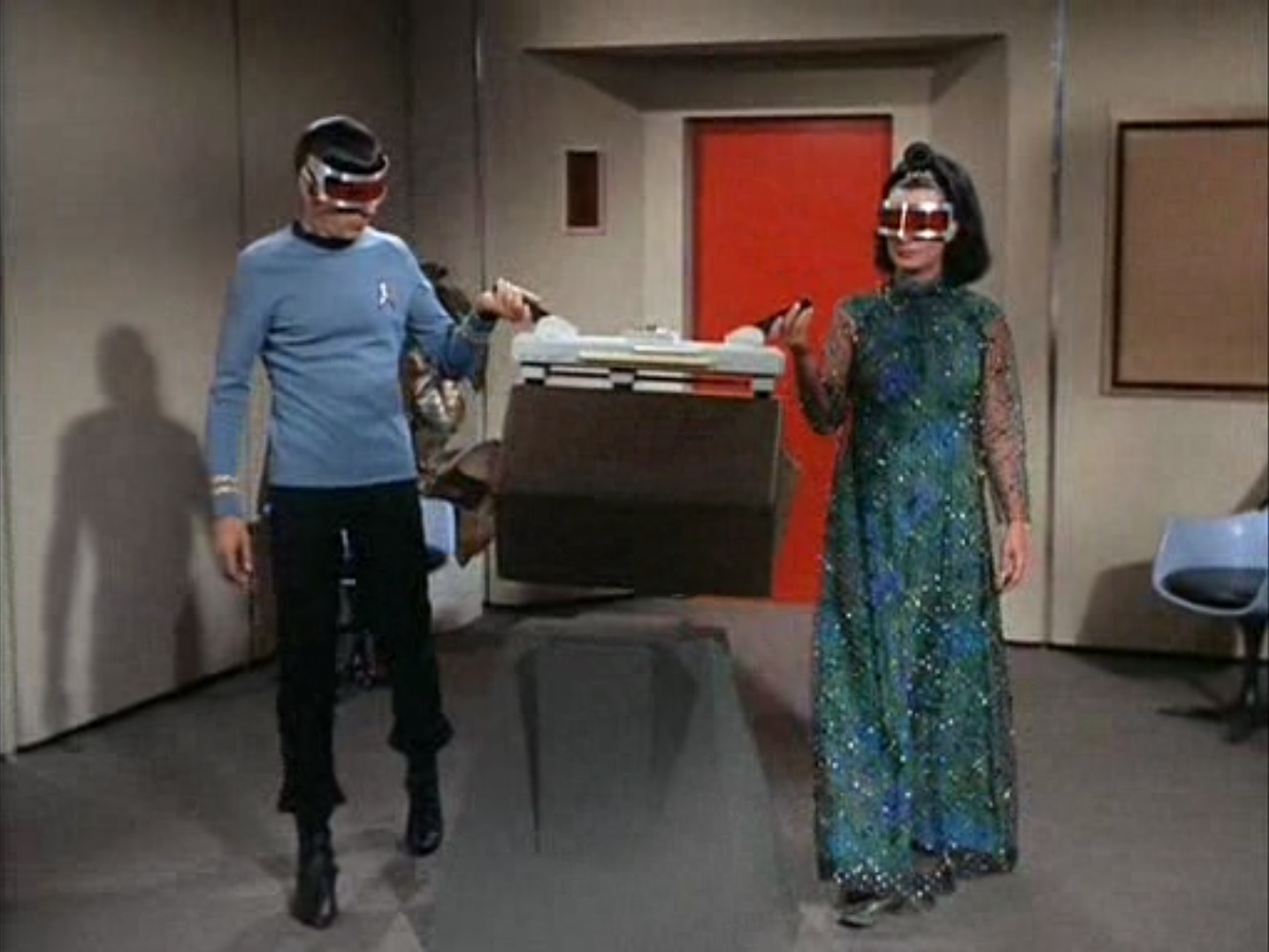
Ambassador Kollos is brought to his quarters by Mr. Spock and Dr. Jones
Jones is a meaty role, much more interesting than when Muldaur played Dr. Ann Mulhall in "Return to Tomorrow", and Muldaur plays it perfectly. Her demeanor is largely arch and cool, as befits Vulcan stoicism, but there are flashes of the human, too: jealousy regarding her unique relationship with Kollos, which she feels is threatened by Spock, who can both look at Kollos and communicate with him; irritation at the parochial behavior of the Enterprise's senior officers, who can't believe she'd give up on men to live with a monster; resentment when things do not go her way.

"Gentlemen, surely we can patronize Dr. Jones a little more intensely. Perhaps if we tower over her!"
The fly in this episode's ointment is another kind of emotion: one-sided love. Accompanying Jones is Lawrence Marvick, an illustrious engineer who is ostensibly there to contemplate how a Medusan might integrate into the crew of a starship. His real aim, however, is to convince Jones to abandon her mission to stay with him. To attain this goal, he is willing to resort to murder. Unfortunately for him, when he confronts Kollos, phaser in hand, all the alien has to do is open his protective box. Marvick is violently repelled by Kollos' appearance and, insane, takes control of engineering just long enough to drive the Enterprise into the barrier that surrounds the galaxy. The ship becomes lost in the zone, and none of the crew can navigate the ship out.
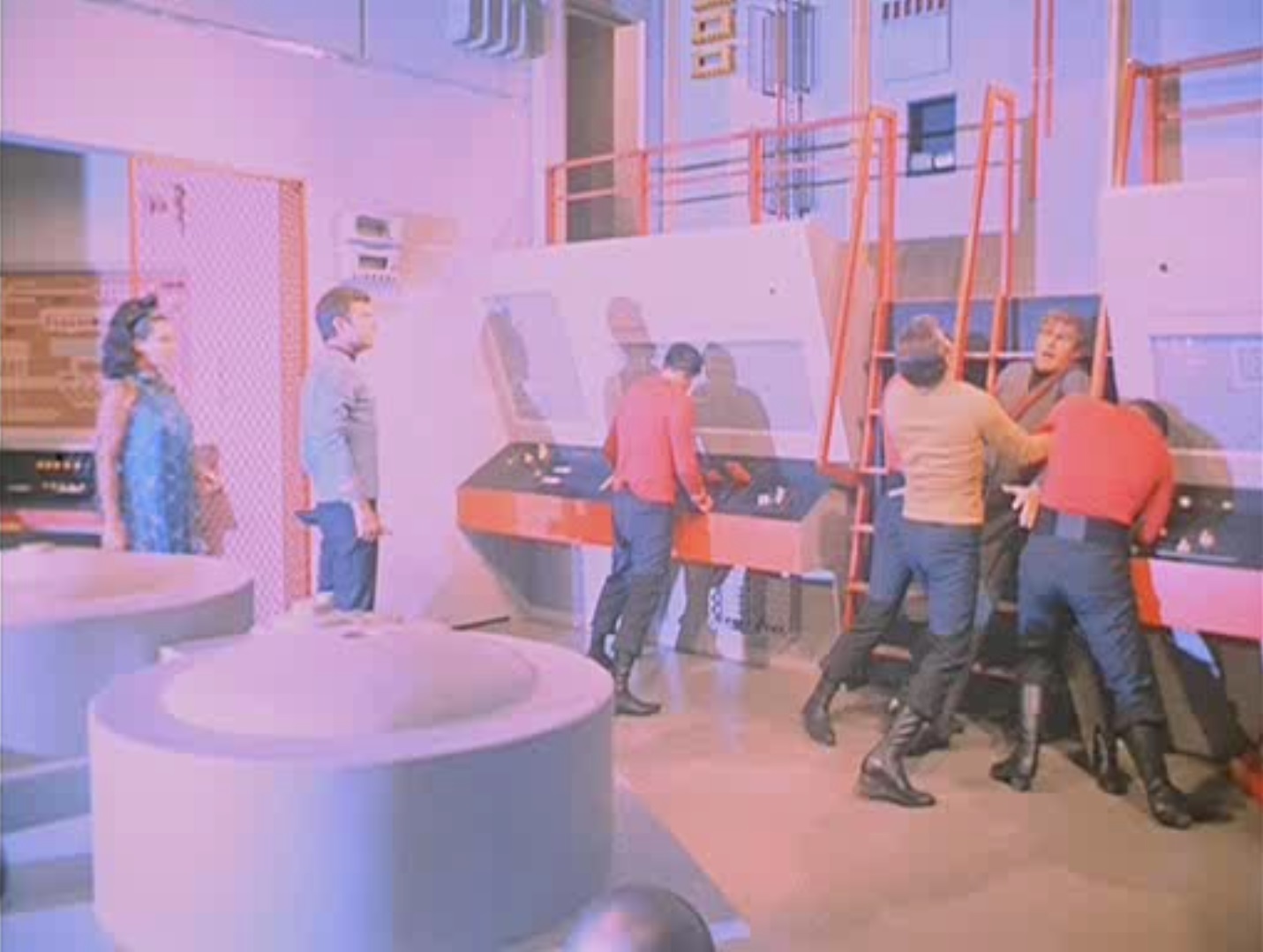
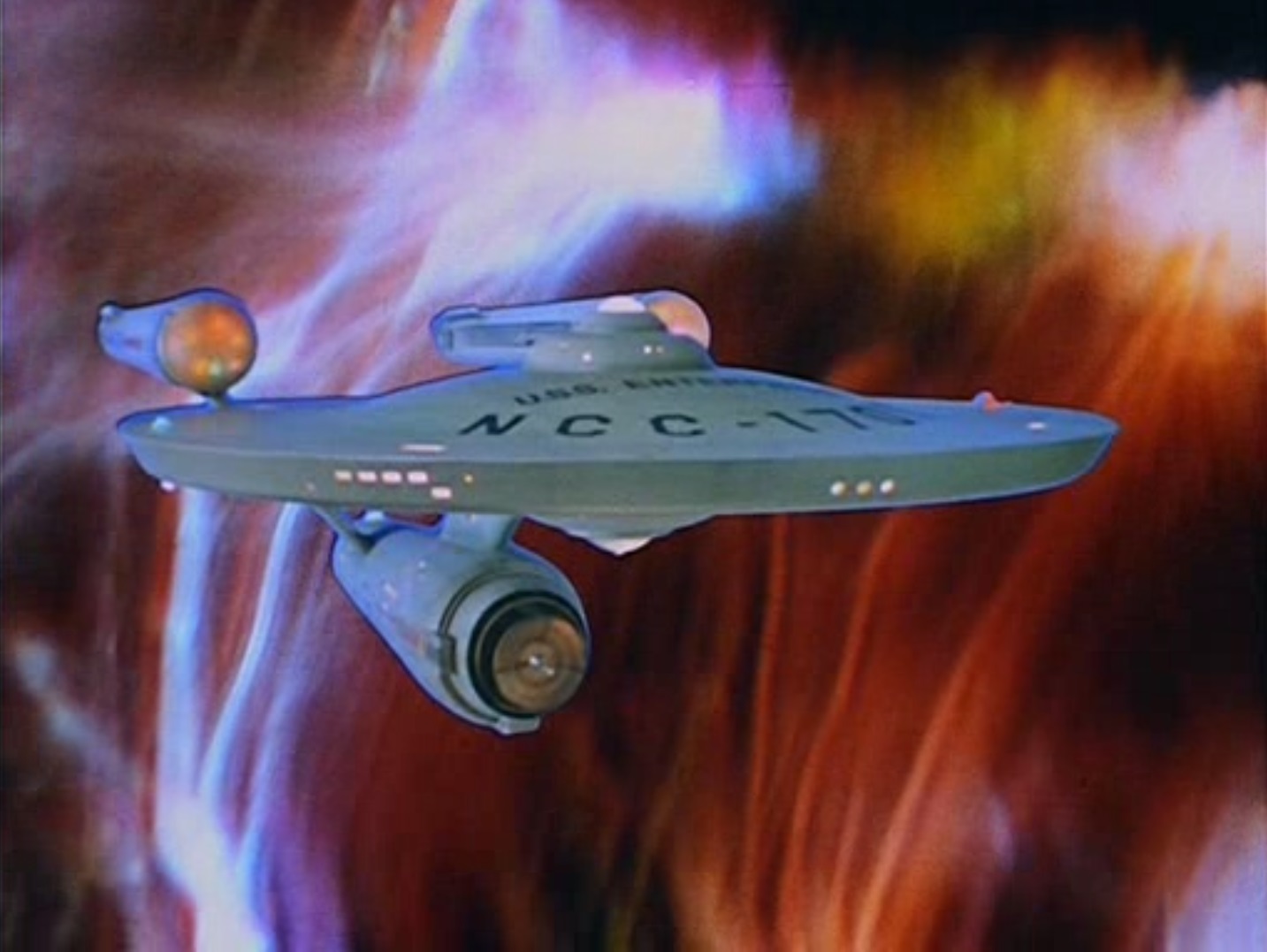
Where 430 men (and women) have gone twice before.
But Kollos can. Spock, with his telepathic abilities and his Starfleet training, volunteers to fuse minds with the Medusan, resulting in an astonishing hybrid, which successfully navigates the ship out of the zone with no difficulty. I cannot adequately express how marvelous Nimoy is in this role, subtly uniting the sober Spock with the somewhat whimsical, profound Kollos in an absolutely unique performance.
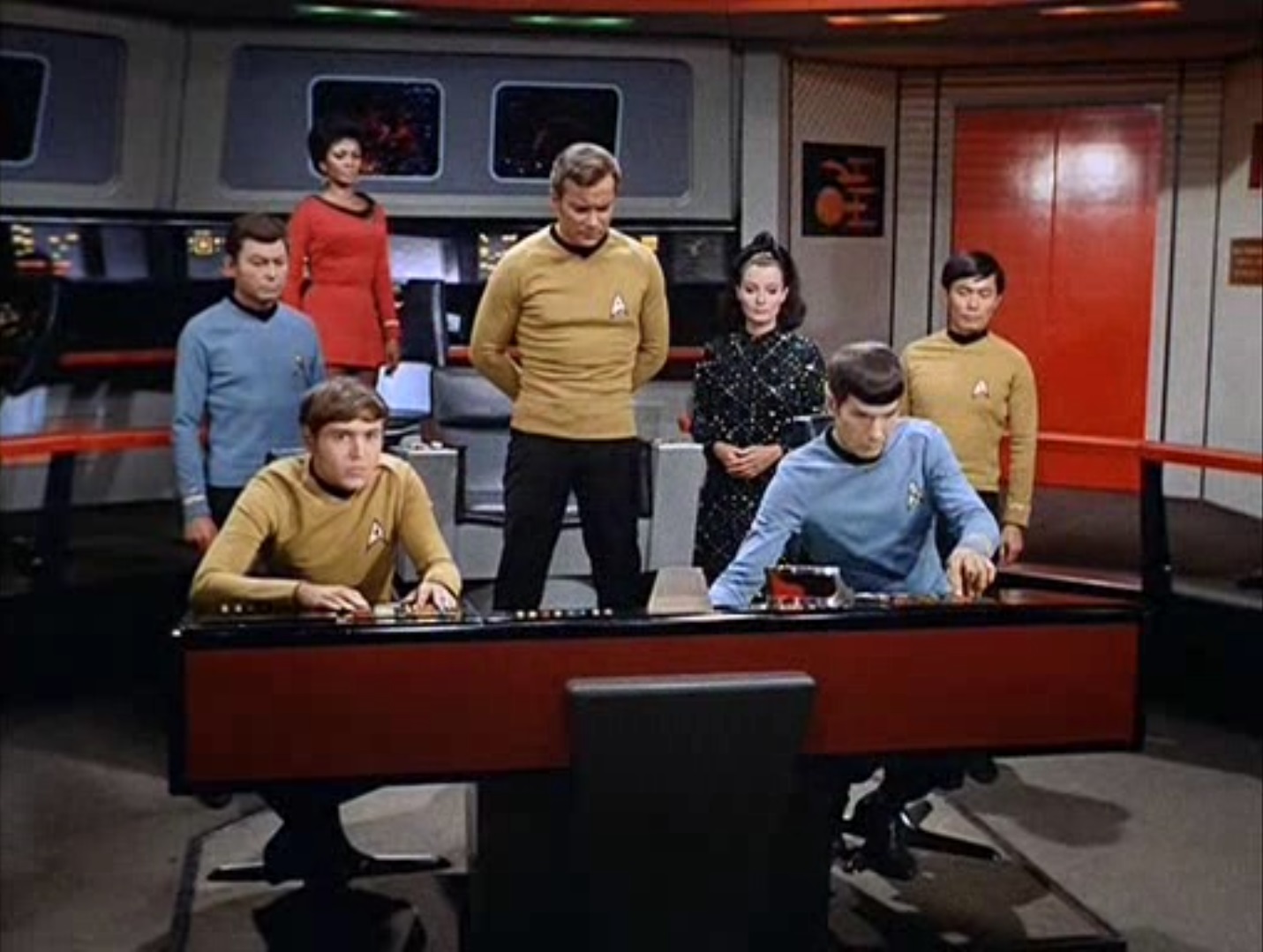
Sp/ollos makes an excellent navigator. I'd love to see a Medusan/Vulcan gestalt in a future episode!
The crew is not out of the woods, however. Upon returning Kollos to his box, Spock inadvertently catches a glimpse of the Medusan and goes insane. Only Jones and her telepathic abilities can save him—but her pettiness causes her to hesitate. It is up to Kirk, frantic with worry for his friend (indeed, seemingly more worried than he was for his ship, for once) to convince the doctor to do her utmost. In the end, what convinces her is the thought that Kollos would never forgive her if she let Spock die.

Kirk gives Dr. Jones a tough talk. To his credit, he is immediately concerned he did it wrong. (For the most part, he does…but one arrow hits the mark.)
I must express how excellent Shatner's performance is in this episode, as well. Missing are his usual, scenery-chewing tics. I have to think that the superlative jobs the cast did in this outing must be somewhat attributed to director Ralph Senensky.
Indeed, all of the "staff officers" of the show, from the cinematographer to the score master to the costume designer, work to elevate the production of "Truth". There are unusual angles, edits, and lenses to convey the disjointedness of insanity and to give a fresh feeling to the show; the score is entirely new and very evocative (though the distinctive "fight" theme is used perhaps one time too many); Dr. Jones' dress, which turns out to be a sensor web, enabling the normally sightless doctor to navigate (an excellent twist tastefully revealed), is terrific.
To be sure, the episode is not completely unexplored territory. Ugliness not equaling evil was a significant message in "The Devil in the Dark", with the monstrous Horta being a gentle, desperate mother being. The Enterprise has visited the galactic barrier twice before, in "Where No Man Has Gone Before" and "By Any Other Name". Both Spock and the ship are put in danger, two occurrences which the show-runners have made almost de riguer as plot drivers.
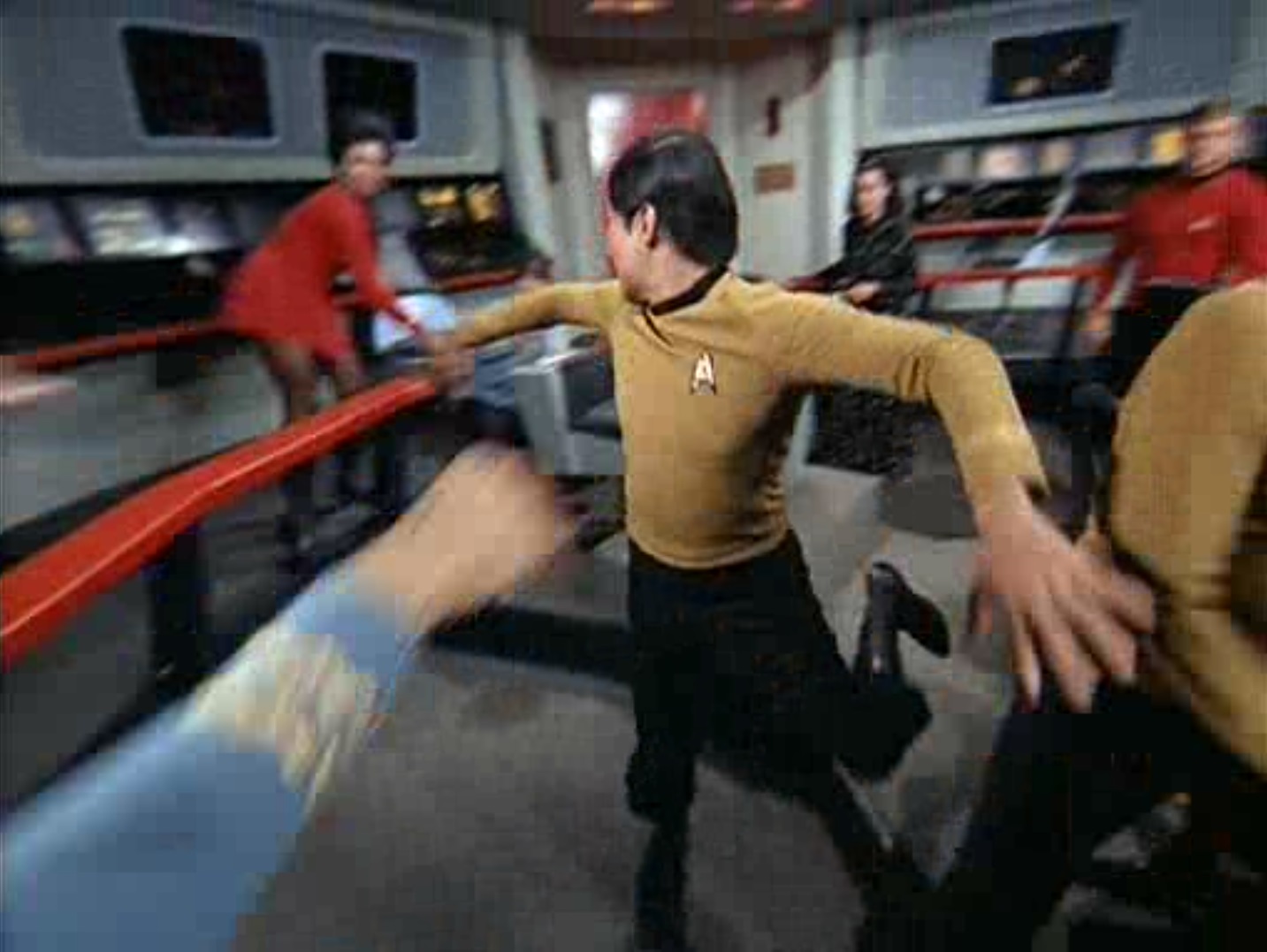
Amok Spock—don't drop acid, kids.
But it's the way it's all done that's special. Beyond the first class work turned in by the cast and crew, the writer must be credited. The pacing is unusual for Trek, with the episode's four acts of unequal length adding to the dreamy sense of madness that suffuses the episode. There is no one crisis to be resolved, but a mounting series of crises all revolving around the Spock/Miranda/Kollos relationship. In the end, the episode is not about Spock surviving or the Enterprise crew getting home safely, but about an unique woman in an unique situation navigating the fusion of not two but three alien races.
It's a rich, beautiful thing. Jean Lisoette Aroeste is a new name to me. This may well be her very first screenplay, and it is her newness that brings such a fresh cast to the show. Just as IF has made it its mission to bring new writers into the literary SF genre, it appears that the mature show of Star Trek may be providing that same vehicle for SF screenwriters (particularly women—the upcoming script, "The Empath" is also by a TV novice, the friend of a fanzine-writing friend).
I can't wait to see how the show develops as a result. 5 stars.
You've come a long way, baby

by Janice L. Newman
Most of the time, Star Trek gets it right. Women are frequently shown in positions of power and authority, and are given the respect such positions deserve. But even in the future, they occasionally run afoul of the undercurrent of sexism omnipresent in our own society. The dismissive attitude about Lieutenant Palamas in Who Mourns for Adonais, for example, or the exasperation shown toward Commissioner Hedford in Metamorphosis (not to mention the lack of concern for her ultimate fate), jar uncomfortably against our hopes and visions of a world where women have true equality and are allowed to pursue their dreams without facing condemnation or condescension—regardless of whether their dream is to be an engineer, a mother, or both.
The silver lining is when the women turn the sexist expectations of the male crewmembers on their heads. The treatment of Dr. Miranda Jones by the senior officers of the Enterprise (excluding Spock) borders on insulting. Dr. McCoy questions her career choice, while Captain Kirk is convinced of his own ability to divert her attention to himself, and patronizingly explains to her what she really wants.
Some of the best moments of the episode are when Dr. Jones defies the men’s expectations. Consider this exchange:
Dr. McCoy: “How can one so beautiful condemn herself to look upon ugliness the rest of her life? Will we allow it, gentlemen?”
All the men at the table: Certainly not.
Dr. Jones: How can one so full of joy and the love of life as you, Doctor, condemn yourself to look upon disease and suffering for the rest of your life? Can we allow that, gentlemen?
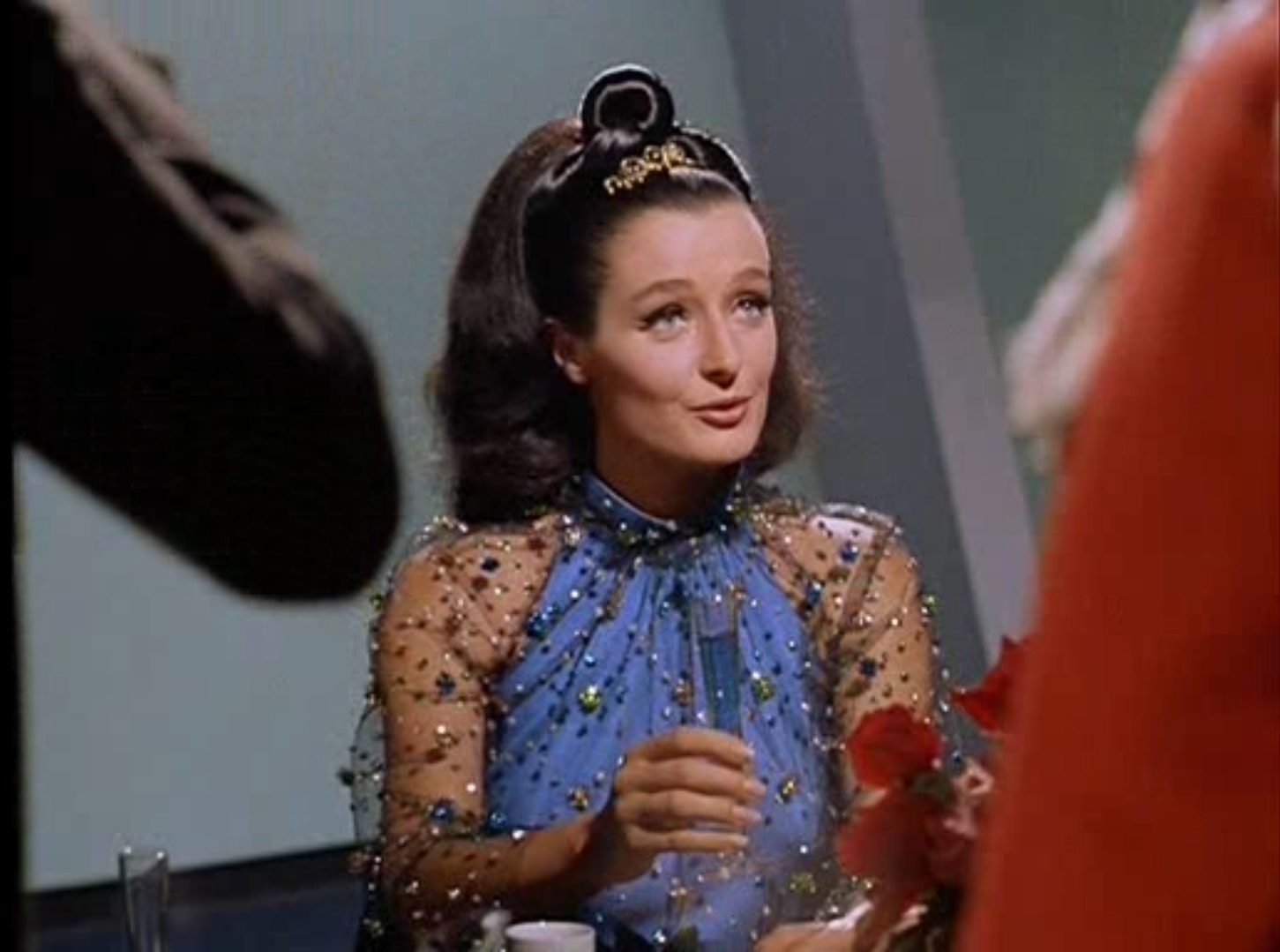
Or this one:
Captain Kirk: You're young, attractive and human. Sooner or later, no matter how beautiful their minds are, you're going to yearn for someone who looks like yourself, someone who isn't ugly.
Miranda: Ugly. What is ugly? Who is to say whether Kollos is too ugly to bear or too beautiful to bear?
Miranda’s quick witted responses, turning the men’s words back on themselves, are enormously satisfying. Her resistance to Captain Kirk’s charms is equally delightful. As much as I dislike any portrayal of sexism in the future, Miranda’s counters made it worth it. They made me wonder about the author of the episode, who she(?) is and whether she encounters such comments in her own daily life. Were the words of Dr. Jones intended to give professional women everywhere a blueprint for how to deal with such difficult situations?
Four and a half stars.
The Ambassadors

by Joe Reid
An ambassador is one that represents their country to a host country. This week in Star Trek we got to see several ambassadors of several races…and of more than one variety.
From the onset of the episode, when we were introduced to Dr. Jones, her desirability as a woman was heavily stressed. Kirk paid Jones several compliments that would lead one to think that Kirk really had a strong interest in her. These were followed by McCoy, and even Spock, who later dressed in Vulcan formal attire with the intent of honoring Dr. Jones.
All the males in this episode seemed strongly drawn to Dr. Jones, even the poor lovesick fellow who lost his life pursuing her. What was also clear was that Doctor Jones had absolutely no interest in the attention of these men in the episode. She was essentially at war with those who wanted her (perhaps a necessary battle to win status as a woman). What piqued her interest was the possibility of building a stronger connection to ambassador Kollos through a mind melding.
Her desire for Kollos was so all-encompassing that when it was revealed that Spock would have an opportunity to meld with Kollos ahead of her, she screamed out in frustration. Her rejection of the attentions of all other men throughout the episode demonstrated her desire for Kollos.
In the end, her desires were requited. Kollos did indeed have some measure of desire for her as well. We saw this as when he joined with Spock, Kollos paid special attention to her, highlighting the fact that her future and his would be intertwined going forward on his world in their near future. Although this was complicated when he also paid special attention to Uhura, Jones was able to receive confirmation of Kollos’ feeling for her when she melded with Spock in order to save his life. That connection to Kollos through Spock was all that she needed to assuage her fears and insecurity about her future with Kollos.
This successful conclusion to the story had Spock himself playing as the ambassador from the heart of Kollos to the heart of Jones, thus ending the quiet war between men and the doctor.
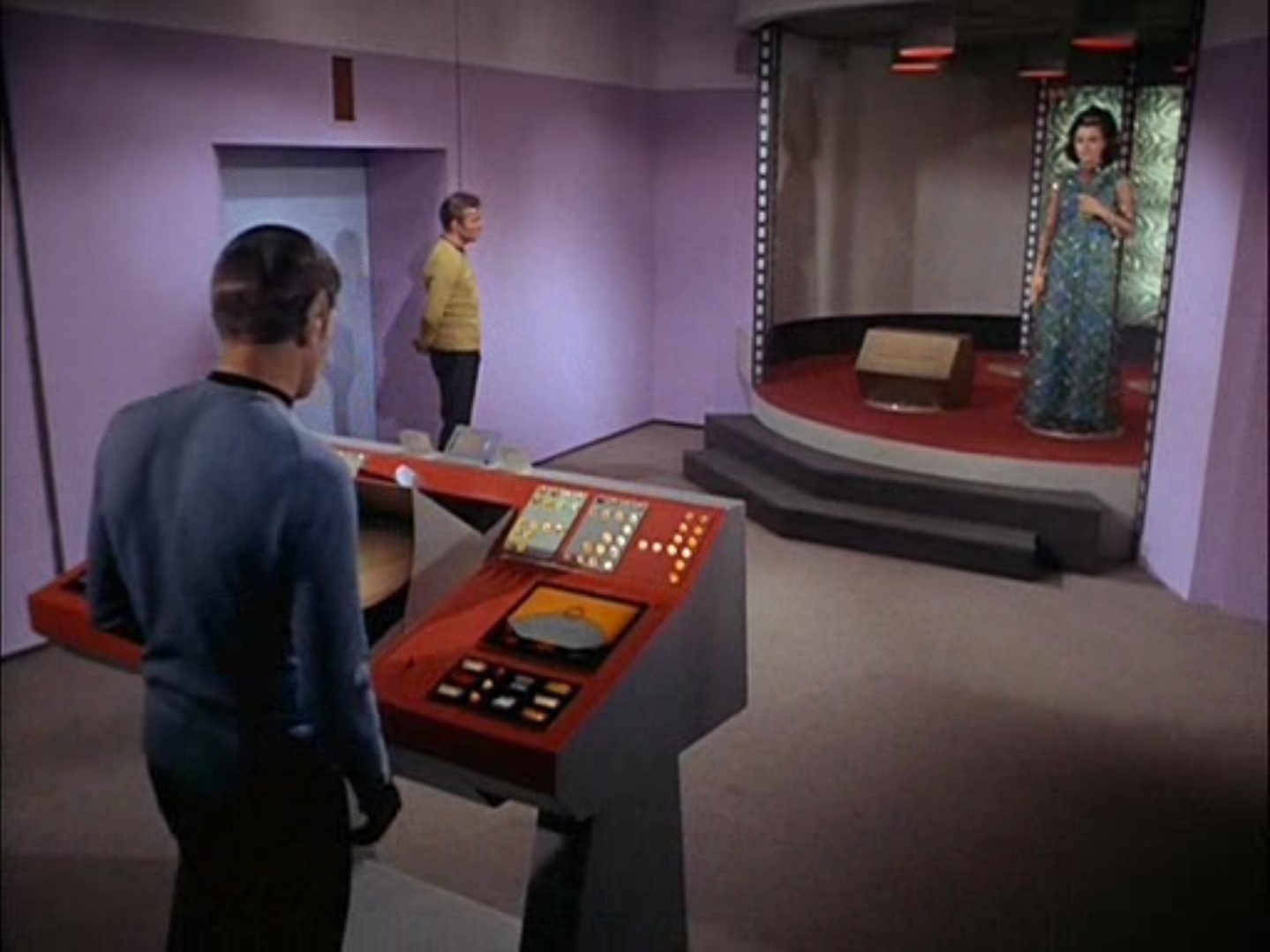
Happy endings for everyone.
It was a fantastic story with solid acting, great costumes, and three-dimensional characterizations. More of this please!
Five stars

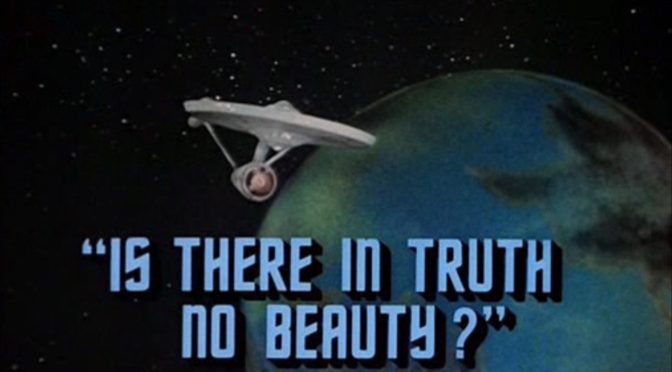


I'm not sure I have much to add. It's probably possible to write a number of critical examinations on the episode's use of beauty, ugliness, and truth. Dr. Jones has to confront the ugly truth of her own feelings before she can achieve the beauty of joining with Kollos and rescuing Spock.
But that dinner party scene was hard to watch. Much of it was probably a somewhat ham-fisted way of emphasizing Dr. Jones's outward beauty, but really came off as condescending, even demeaning.
There are subtleties in Diana Muldaur's performance, too. She never quite looks right at anyone she's talking to, and there at least a few shots where her eyes seem unfocused. Perhaps her blindness shouldn't have been such a surprise.
My field notes…
Wig Trek: yes
Cave Trek: no
Fog Trek: no
Doinnggg Trek: no
Love Trek: see below
If this teleplay had been the season opener, what different expectations would have been suggested as compared to those evoked by the actual opener, “Spock’s Brain,” a piece of real pulp silliness. “Truth/Beauty” has an unusually literate and tight script without seeming to strain for effect. It’s as if the crewmembers and their guests in this one really are adults.
The bit about the ship crossing the galactic rim may raise questions in those viewers who remember what happened in “Where No Man Has Gone Before,” and a little more about the “space-time continuum” the ship enters would have been interesting; but there’s a fair bit going on intellectually in this one as it is. However youngsters can enjoy the cool idea of creatures to behold which is to become violently insane. At first this is understood as being because the aliens are so unspeakably ugly, but perhaps they are too beautiful, like beings from Greek mythology, in their actual forms for human tolerance. I myself do not accept the common notion that beauty has no existence apart from the beholder. That is not a matter of beauty, but of taste, quite a different thing. Beauty is a category of reality. But not all beauty immediately strikes everyone as beautiful. For example, Bach's Goldberg Variations is a beautiful work, but play it cold to the typical middle school pupil and he or she probably will not be entranced.
In “The Enterprise Incident” Spock distracted the Romulan commander with a sort of romantic interaction while Kirk located and stole their cloaking device. In “Is There in Truth No Beauty?” Kirk attempts to distract Miranda Jones with romantic moves while Spock establishes contact with the Medusan in order to get its help for navigating the ship back into the galaxy. It was pleasant to see the captain's efforts so useless, after various Treks in which Kirk's super power of luv overthrew an alien female's defenses (e.g. "Return to Tomorrow" last season).